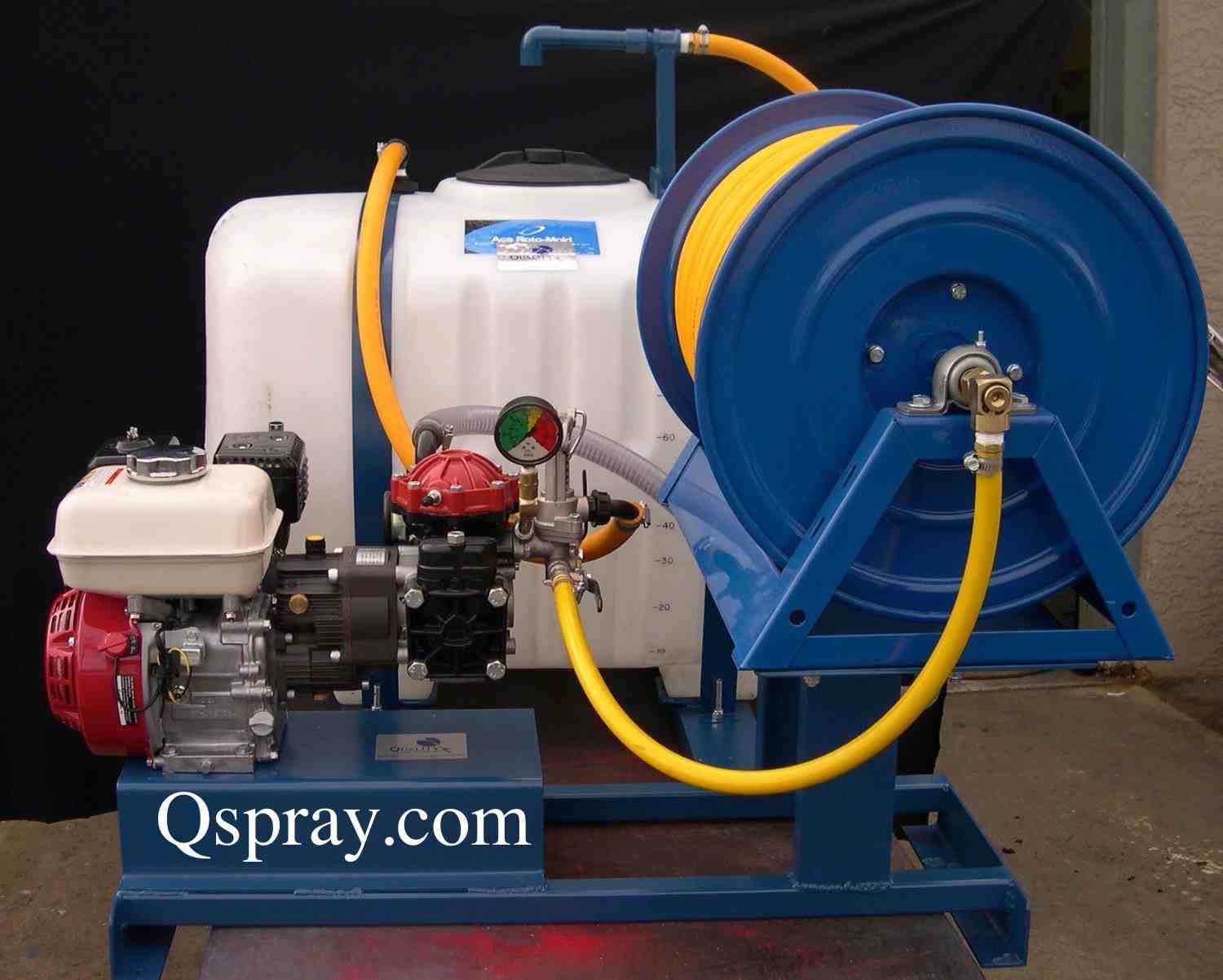Tree Sprayer – Types of Tree Power Sprayers
Posted by Andrew Greess on Feb 13, 2020
Tree Sprayers – Types of Tree Power Sprayers
At QSpray.com, we build lots of Weed/Landscape Spray Equipment for our landscape clients. We can help you determine the best tree sprayer for your needs.

We mostly see two types of tree sprayers:
1. Deep Root Fertilization Sprayers-These sprayers are designed to inject fertilizer into the roots of trees to improve tree health.
2. Tree Spray Rigs – These sprayers are designed to apply a product to the leaf canopy of trees to repair or prevent damage from disease or pests.
Considerations for Tree Spray Rigs:
1. Tank size. The first thing to think about is tank size.
Landscape Sprayer Tank size should be the largest one needed to support the average or expected daily workload. Select a tank large enough so a technician isn’t constantly refilling, which kills productivity and can annoy customers who don’t like vendors using the customer’s water. The tree sprayer tank must be sized to fit in the truck and keep the load (weight of the water) within the truck’s safe handling capacity.
If the company hasn’t yet acquired the vehicle, use this formula to determine tank size (Average number of stops per day) x (average number of gallons applied per stop) + small safety margin = recommended tank size.
It’s better to have too many gallons than not enough. Having to stop to refill the tank will hurt productivity and often angers the customer whose water you’re using to fill the tank.
Remember, a larger tank can always be partially filled if that’s all the day’s workload requires.
2. Pump. Tree sprayer pump selection should be based on:
The material being applied. For example, some fertilizers can be abrasive and require a different pump than pesticides. Diaphragm pumps are often a good choice for fertilizers.
Volume & pressure required. Pushing water through a hose is a physics problem. Select a pump that can provide the required volume (in gallons per minute - GPM) and pressure (in pounds per square inch – PSI). If you need agitation in the tank for extra mixing of the material, this increases the GPM requirement of the pump.
3. Hose.
The hose should be long enough to reach the furthest tree you have to spray. In fact, it should be a bit longer because each year, you may need to cut off the first few feet, which get damaged from wear. Obviously, the tree sprayer hose needs to be rated at or above the PSI rating of the pump.
Other components are not quite as critical, though even the little stuff matters. For example, some companies use cheap nylon fittings to keep the tree sprayer cost down. We don’t think it’s worth saving a few dollars upfront, if it means you are going to have problems, like chemical spills, down the road. At QSpray.com, we use top-quality brass fittings or top-of-the-line Banjo poly fittings.
Need the best tree sprayer for your business? Request a free custom quote from QSpray.com:

